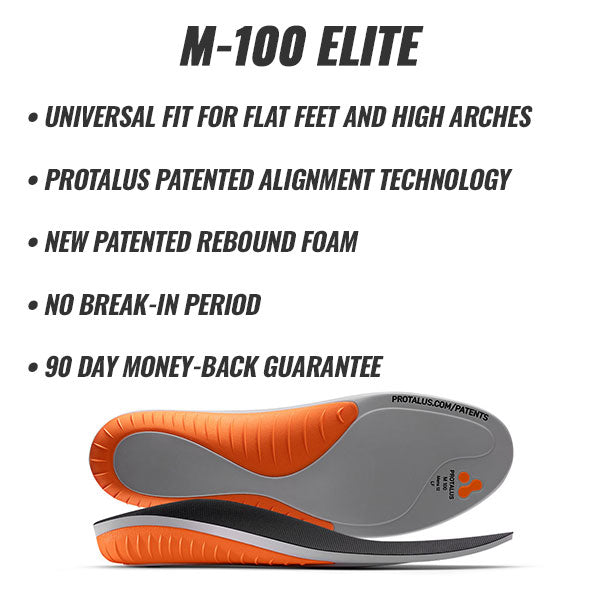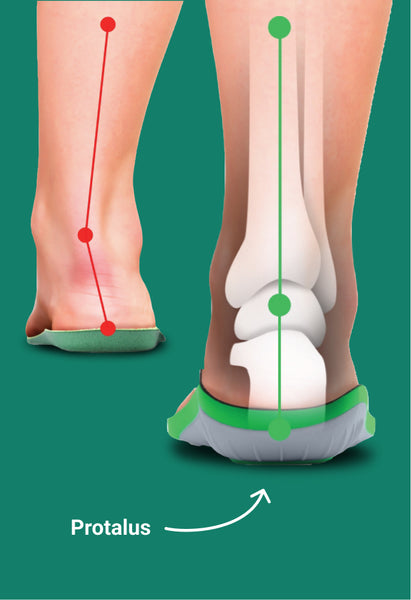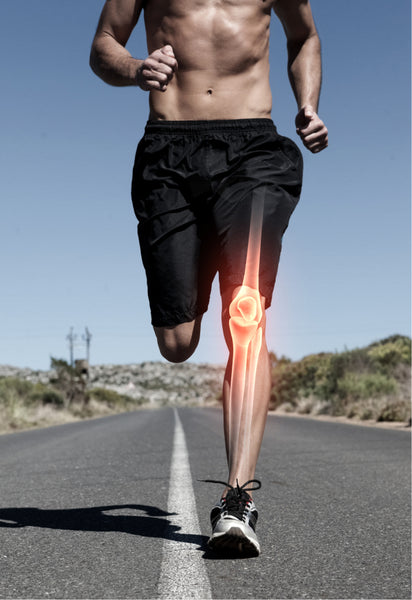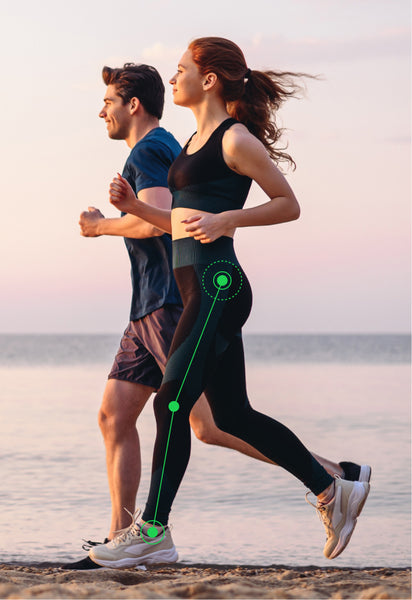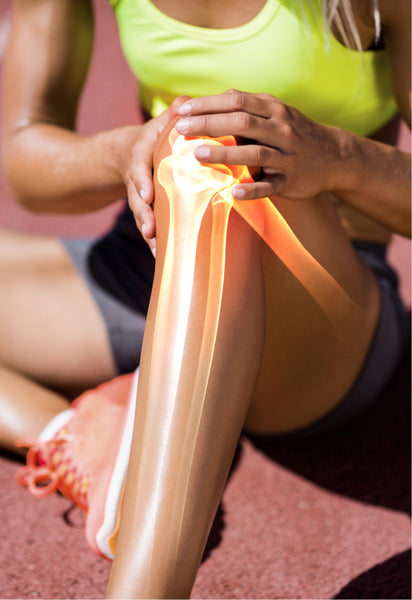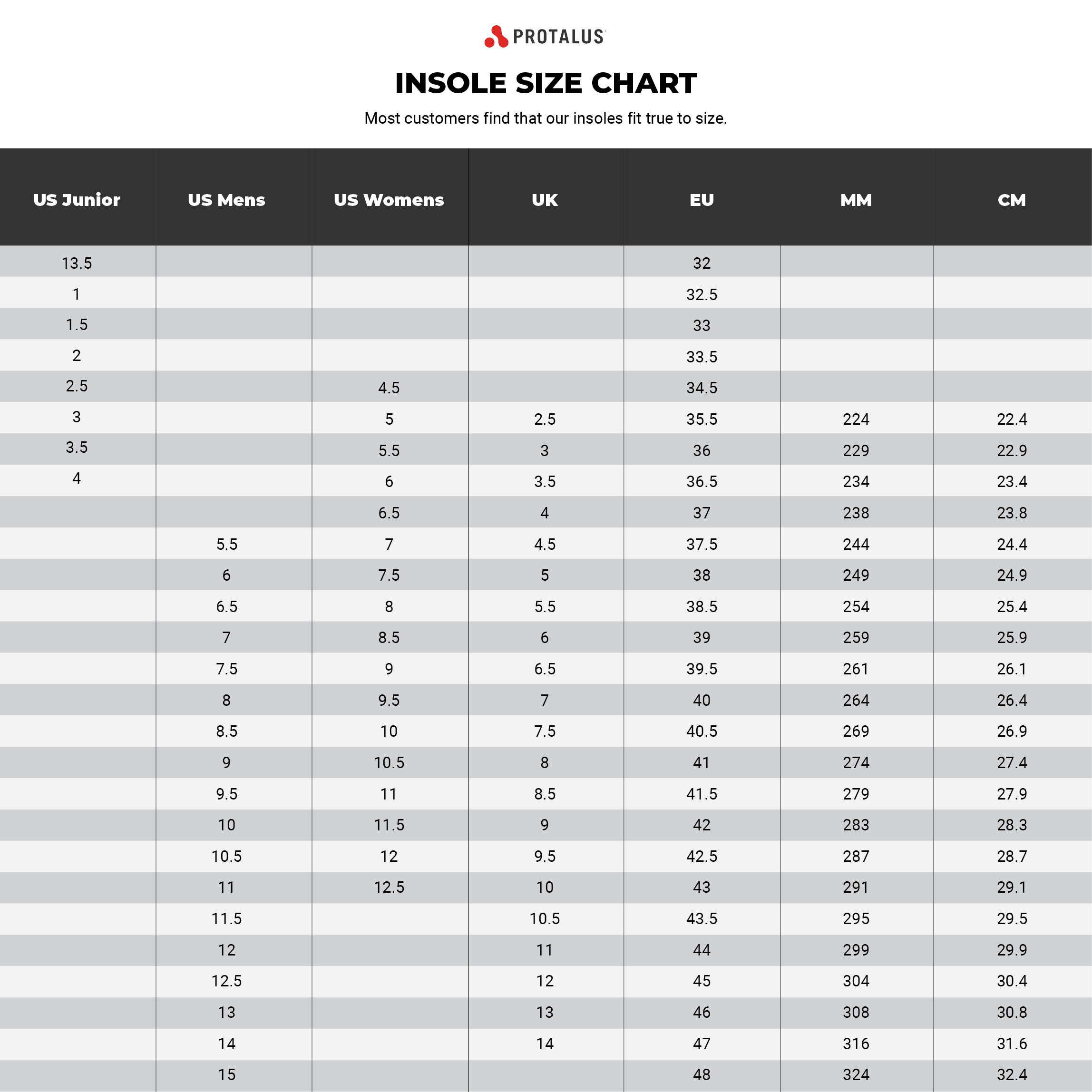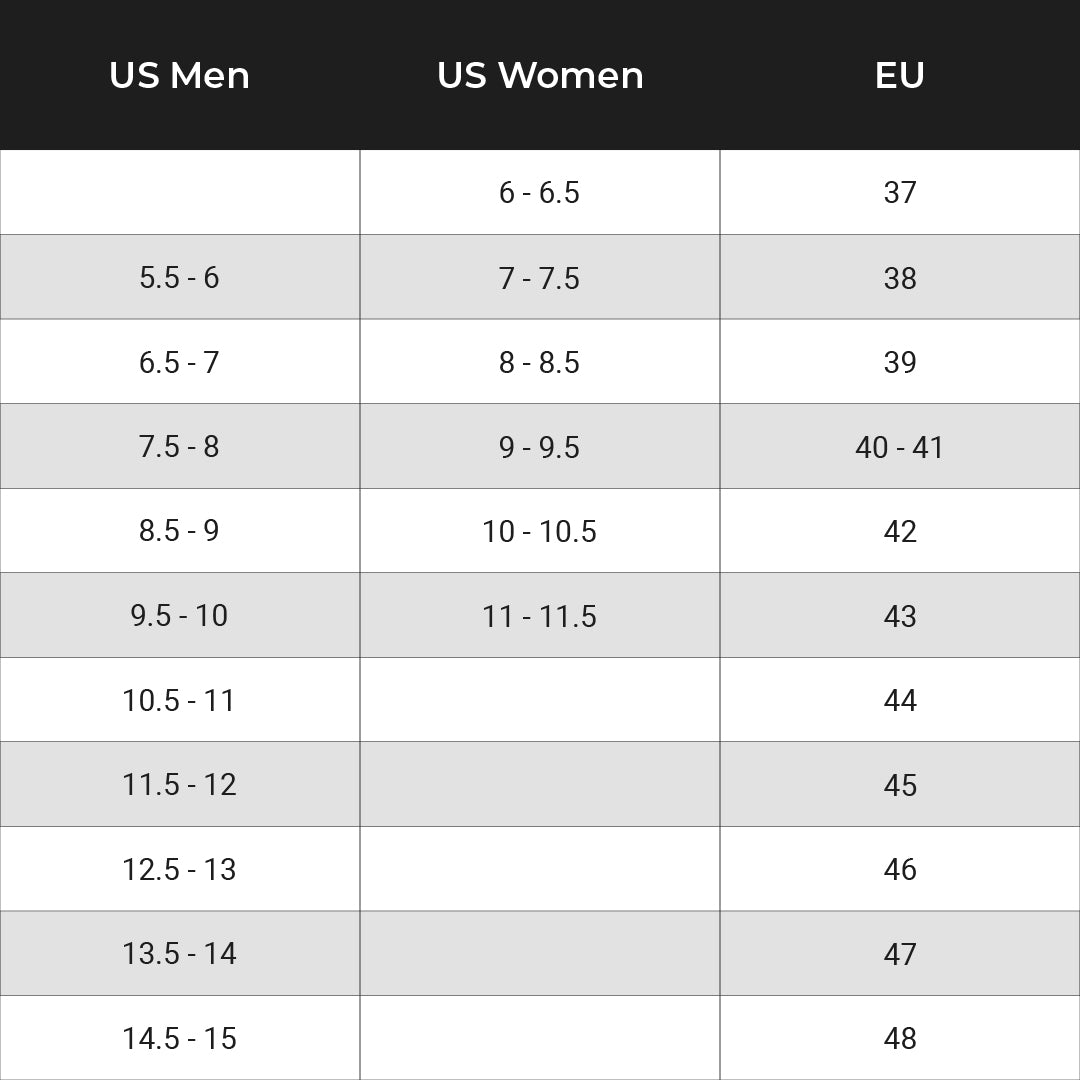Do You Need Shoe Inserts?
If you enter any pharmacy, you will see a variety of shoe insoles for sale. One display rack of insoles might have a dozen or more options to choose from with some inserts targeting certain conditions and others mostly just adding cushion. It can be hard to understand if this product is the right solution for what you are experiencing or if it's better to go without them. There is even a group of people who believe that the more your foot comes in contact with the ground, the better and advocate for no soles at all. So how do you know if you need shoe inserts?
Insoles vs Inserts
Let’s get some of the terminology out of the way first. The words “inserts” and “insoles” are generally interchangeable. While they both refer to an after-market insole that you add to your shoe, they do come in a number of different quality levels. In a store you may see insoles that are there to add comfort and are mostly made of cushioning foam or a gel substance. These insoles may have a flatter surface and are essentially there to help absorb shock under your feet. The next level up, and typically the next price point up, is what are referred to as “contoured insoles”. These might not appear to have a lot of cushion but you can tell from looking at them that they offer support due to the corrective benefits of their contoured shape. Protalus insoles are considered contoured insoles.
If we continue further up the price scale we will arrive at the gold standard of shoe supports: custom orthotics. These are not available in stores and require a podiatrist or similar medical professional to take detailed measurements of your feet in order to produce a custom set of orthotics for you. While many people do find relief with orthotics, the price of these custom supports can range into the hundreds, making them cost-prohibitive for many people. They also may feel stiff if you are looking for a product that can flex with you while you engage in high impact activities such as running or playing a team sport.
Are shoe inserts for you?
Now that we’ve gone over what is on the shelves, let’s answer the question before us: Do you need shoe inserts? The answer will very much depend on the cause of your discomfort and what solutions the insoles offer. Let’s look at some of the most common reasons people shop for inserts to understand the possible benefits they can gain:
Discomfort from Standing for Long Hours:
This one can be a bit tough to narrow down because sometimes the result of standing for long hours can be the formation of a number of foot conditions, but let’s examine the issue here. When you stand for long periods of time, especially on hard surfaces, the pressure of bearing your own body weight is taken on by your spine, knees, ankles, and ultimately your feet. If you picture stacking a few blocks neatly on top of each other and pushing directly down on the top block, you can imagine the weight born by the bottom block is pretty great but it can do a decent job staying in place. Now imagine if the second block in the stack is a bit off-center when you push on the top of the stack. The weight might crush to the opposite side of the blocks or it might even topple over. Many people experience this pain because their ankles or their knees are slightly out of alignment.

If you choose to put a cheaper foam cushion or gel cushion insole under that misaligned block stack, it may help to absorb that shock for a bit but ultimately you will get to a point of discomfort unless you correct the misalignment. Beyond that, the material that is used for most foam cushioning, EVA, does have a tendency to compress over a relatively short period of time. So if the only relief you are getting is from the EVA foam, it likely won’t last that long. For these reasons, a contoured insole is a great option for standing for long periods.
Injury Prevention in Athletes:
Some sports like football or soccer require movements such as running at a high speed then stopping quickly and changing directions. Other sports such as running or basketball require the athlete to engage in repeated, high impact movements. In any sport there will be movements that stress the body and can result in overuse injuries. These can range from turf toe to shin splints and some of them are difficult to avoid even when the athlete leverages preventative measures such as strength training, stretching, and good body mechanics. Just as stated above, cushion-only insoles can provide shock absorption but they will not last for long periods of time and they do not correct the root of many overuse injuries: misalignment. This is because, no matter how much an athlete strives to maintain good body mechanics, or “good form”, if the internal structures of the body are misaligned to begin with, no amount of form correction can change that. When our skeletal system is misaligned, even slightly, our muscular system as well as other parts of our skeletal system work hard to try to compensate for those weak points. This is why we recommend a contoured insole combined with strength training as well as awareness of body mechanics for the greatest potential to prevent athletic injuries.

Foot Conditions Such as Plantar Fasciitis
This may be the biggest reason people end up in the aisle at the drug store staring at the rack of shoe inserts; they are in pain and can’t take it anymore. Some foot conditions can arise on their own, and some can come as a result of the activities we listed above or other environmental factors such as wearing ill-fitting shoes for long periods, wearing high heels too often, or a traumatic injury such as a car accident. Whatever the reason, it is important to have a good understanding of what you are correcting before spending money on solutions. This typically means going to a medical professional and getting a proper diagnosis. Many people think they have plantar fasciitis because they are experiencing heel pain but there are many conditions that can lead to heel pain such as bursitis, heel spurs, neuritis, or tendonitis. Once you have a diagnosis, you may need to dig a bit to find the root cause of your issue. For example, in the case of plantar fasciitis, many people who suffer from this condition also have flat feet. Flat feet can be the result of overpronation, or a misalignment at the ankle. In that case, finding an insole that can correct your ankle misalignment will help your arch recover it’s proper structure and relieve the strain being placed on your plantar fascia. So a person in that situation would seek out an insole that directly targets overpronation through alignment correction at the ankle.
The Myth of Arch Support
Many insoles state that they offer arch support but how do you know if you need arch support? Or more to the heart of the matter, what does an insole with arch support really do? Looking at the example of a person with flat feet, it seems to make logical sense that you would want to “pick up” what has fallen - in this case the arch. But the arch is not a stand-alone structure. The arch is formed by the tension of the other skeletal structures in your foot and the tendon across the bottom of your foot, the plantar fascia. So if you add a support under your flat arch but fail to correct the other issues that caused it to fall, you might not get much relief. Manipulating the foot from below will not correct any issues at the ankle or issues that go further up the kinetic chain such as at the knee or hip. Also, not everyone needs the same level of correction. Purchasing an insole off the shelf for arch support is a real shot in the dark when it comes to getting the right level of correction. Unless a podiatrist has measured you and you’ve ordered custom orthotics, the advertisement of arch support on shoe insert packaging is little more than a marketing ploy.

Alignment Correction
Instead of arch support, you should be looking for a product that focuses on alignment. When your ankle is in a neutral position, it supports the structures in your knee and hip to also maintain a neutral position. It also provides the right conditions for your foot to maintain its structural integrity and properly distribute the pressure that those elements are bearing. In this way, the ankle works like the steering wheel for your body. If you stand up right now and bend both of your ankles downward as if to touch them against each other, this is essentially what happens during overpronation. You can see how this creates a flat foot and can imagine what happens after a long day of walking like that on hard floors. This is why Protalus insoles focus on keeping the ankle in a neutral position through our patented heel cup technology. Not only is this technology exclusive to Protalus, it is the only insert technology that is proven through independent studies to correct misalignment and therefore reduce the risk of injury and musculoskeletal disorders. The heel cup of a Protalus insole holds the ankle in a neutral position by providing guardrails beyond which your ankle cannot rotate. This helps you maintain a safe range of motion whether you need a small amount or a large amount of correction. Either way your ankle is kept comfortably neutral.
Conclusion
If you’re going to spend the money on a shoe insert, you should really be able to answer the question, “What is this doing to correct my issue?” If you don’t know the answer to that question, what you’re really doing is placing a small bet. You are betting that the shoe insole you’re buying addresses your exact issue to the correct extent that you need it. And you’re using your money to place that bet so if the insert you purchase doesn’t work, you’ve lost that money that you invested into finding the solution to your problems. If you try three pairs of cheaper, cushion-only insoles and none of them work, are they really any cheaper in the end? We invite you to try Protalus insoles. Not only do we use proven technology, but we back your purchase with a 90 day money-back guarantee. If you aren’t sure how Protalus insoles can address your particular issue, give us a call or send us an email, we’ll be happy to talk through your particular situation.
Recommended Posts
Saying Goodbye to Leg and Foot Pain: The Power of Insoles
by Anna Heston • November 04, 2021Kick leg and foot pain to the curb with the proper shoe insoles! Discover relief now!
How Plantar Fasciitis Sufferers Find Comfort with Insoles
by Anna Heston • November 04, 2021Say goodbye to leg & foot pain! Insoles like Protalus T-100 offer relief, support & comfort.
Flat Feet: What It Really Means for Your Feet and Body
by Anna Heston • November 04, 2021Flat feet? Discover the challenges and relief with Protalus insoles! Say goodbye to pain, improve stability, and boost performance. Read more!







